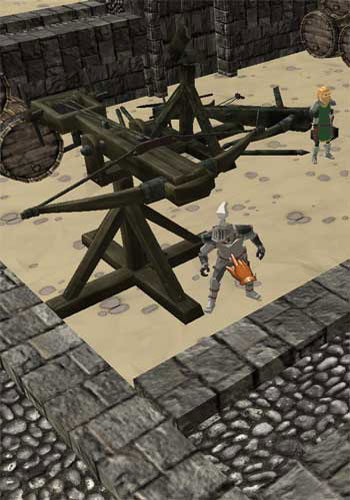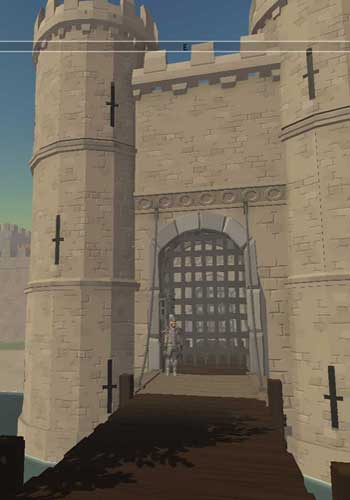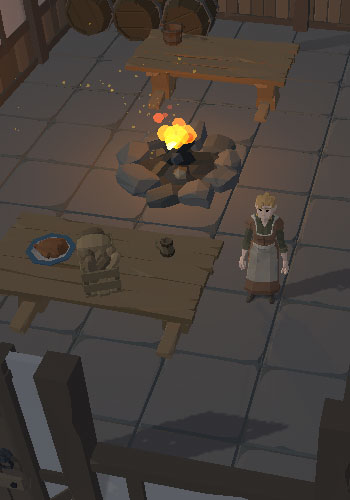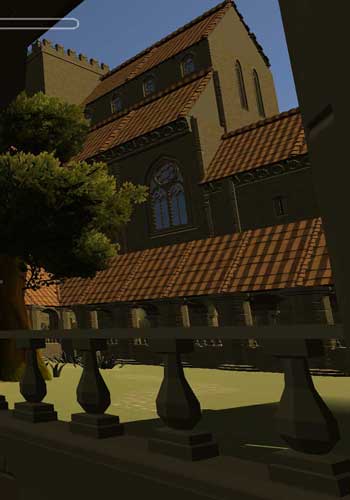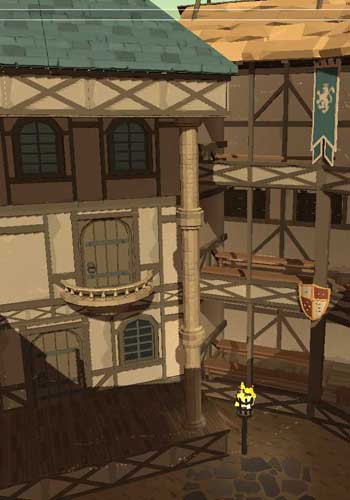The men that designed and built the Medieval castles had reached the top of their profession. They were paid large sums of money and were highly respected by the Medieval kings.
Gundulf (died 1108)

 lso known as the 'weeping monk
of Bec'. Gundulf was born in Vexin, an area of north-west France, in
around 1023 or 24. He worked at Rouen Cathedral as a clerk and was soon
recognised for his ability to
organise. After a pilgrimage to Jerusalem Gundulf decided to move to the abbey
of Bec. It was here that he
met Lanfranc. After the Norman Conquest Gundulf came across from Normandy with
Lanfranc and being admired for his
organisational skills was instructed by Lanfrac to rebuild Rochester Cathedral.
In 1077 Gundulf was made Bishop of Rochester and a year
later William the Conqueror employed Gundulf's skills in the construction of the
White Tower, the
keep of the Tower of London. William II instructed Gundulf to build the castle at
Rochester.
lso known as the 'weeping monk
of Bec'. Gundulf was born in Vexin, an area of north-west France, in
around 1023 or 24. He worked at Rouen Cathedral as a clerk and was soon
recognised for his ability to
organise. After a pilgrimage to Jerusalem Gundulf decided to move to the abbey
of Bec. It was here that he
met Lanfranc. After the Norman Conquest Gundulf came across from Normandy with
Lanfranc and being admired for his
organisational skills was instructed by Lanfrac to rebuild Rochester Cathedral.
In 1077 Gundulf was made Bishop of Rochester and a year
later William the Conqueror employed Gundulf's skills in the construction of the
White Tower, the
keep of the Tower of London. William II instructed Gundulf to build the castle at
Rochester.
| Building | Construction Date |
| Rochester Cathedral | 1077 |
| Tower of London | 1078 |
| Rochester Castle | 1089 |
| Colchester Castle | ? |
James of St George (died 1309)

 he Master Mason
responsible for the design and construction of Edward I's castles in the north
of Wales during the conflict with the Welsh and Llewelyn. Edward met James
whilst travelling in Savoy. Impressed by his skills of castle building, Edward brought
James back to England and by 1278 James was in North Wales working on castles
there. Castles that James built include Flint, Rhuddlan, Harlech, Beaumaris and
Caernarvon but there are many more. In many castles he used a concentric
plan where a succession of nested walls and towers were built, the walls getting
taller towards the centre of the castle. In these castles there are no central
keeps, but one or more of the wall towers are large enough to be used in the
same way.
he Master Mason
responsible for the design and construction of Edward I's castles in the north
of Wales during the conflict with the Welsh and Llewelyn. Edward met James
whilst travelling in Savoy. Impressed by his skills of castle building, Edward brought
James back to England and by 1278 James was in North Wales working on castles
there. Castles that James built include Flint, Rhuddlan, Harlech, Beaumaris and
Caernarvon but there are many more. In many castles he used a concentric
plan where a succession of nested walls and towers were built, the walls getting
taller towards the centre of the castle. In these castles there are no central
keeps, but one or more of the wall towers are large enough to be used in the
same way.
| Building | Construction Date |
| Flint Castle | 1280 |
| Rhuddlan Castle | 1282 |
| Harlech Castle | 1289 |
| Caernarvon Castle | 1292 |
| Beaumaris Castle | 1296 |
William Wynford (died 1405)

 aster mason who
worked on projects at Windsor Castle, Wells Cathedral, Winchester College and
New College Oxford. Wynford worked at Windsor Castle from 1360 and work here
included the Great Gate and the royal lodgings in the upper ward. While Wynford
was at Windsor, the clerk of the works was William of Wykeham. Wykeham was to
become the Bishop of Winchester Cathedral and when work was needed to convert
the Norman Cathedral to the Perpendicular
style, Wynford was employed to perform the task. Work began on 29th of
September, 1394. It is believed that William Wynford worked on the geometric Old
Wardour Castle. During his long career Wynford worked mainly in the south-west
of the country.
aster mason who
worked on projects at Windsor Castle, Wells Cathedral, Winchester College and
New College Oxford. Wynford worked at Windsor Castle from 1360 and work here
included the Great Gate and the royal lodgings in the upper ward. While Wynford
was at Windsor, the clerk of the works was William of Wykeham. Wykeham was to
become the Bishop of Winchester Cathedral and when work was needed to convert
the Norman Cathedral to the Perpendicular
style, Wynford was employed to perform the task. Work began on 29th of
September, 1394. It is believed that William Wynford worked on the geometric Old
Wardour Castle. During his long career Wynford worked mainly in the south-west
of the country.
| Building | Building Work Performed |
| Windsor Castle | 1360 |
| Winchester Cathedral | 1394 |
| Old Wardour Castle | 1393 |
Page Navigation

More castle pages
Pages in this section
Types of castles

Medieval Castles
Types of castles
- Early Fortifications
- Castles of William the Conqueror
- Earthwork castles
- Motte and bailey castles
- Square keeps
- Shell-Keeps
- Polygonal Keeps
- Concentric Castles
Other details




